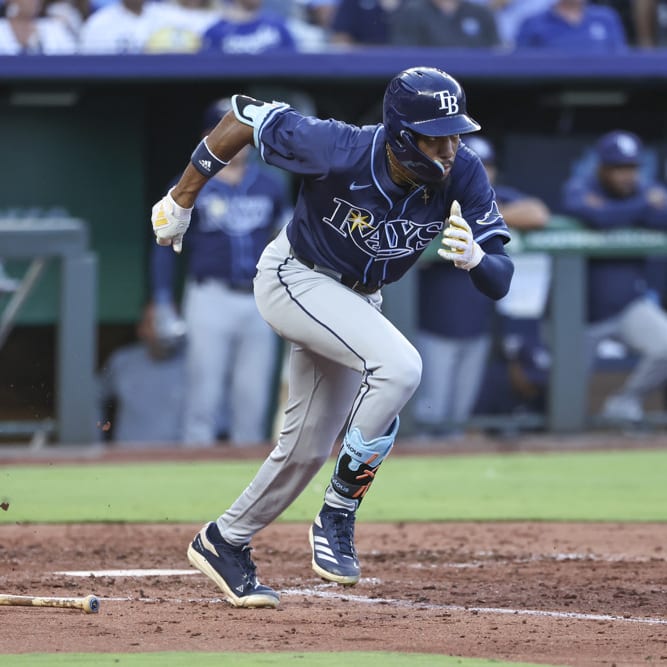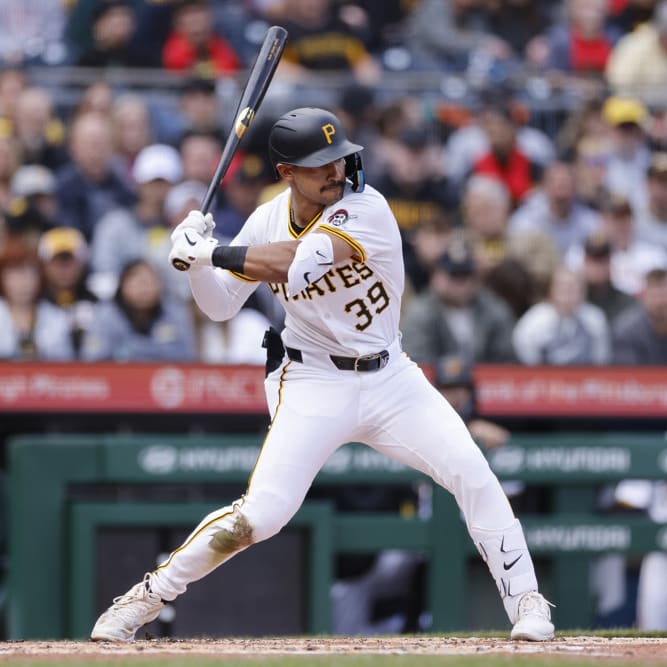This article is part of our Stathead Sagas series.
Some of the best pitchers in baseball over the last few years have been middle relievers. Kenley Jansen set the record for strikeouts per nine innings last season in a middle-relief role. Jonny Venters posted an ERA under 2.00. Mike Adams has defined elite relieving for the last three years. But these guys routinely get passed over in standard 5 x 5 leagues because they only offer help in three categories: strikeouts, ERA and WHIP, and the strikeouts are so few that their strikeouts barely make a dent compared to the amount even mediocre starters can offer.
However, in leagues with an innings cap -- most sensible rotisserie leagues -- raw totals become less important. Assuming everybody in the league hits or comes close to the innings cap, you're competing for per-inning totals in all five of the pitching categories. Myself and fellow RotoWire employee Kevin O'Brien are competing in five Yahoo Pro 12-team rotisserie leagues this season, and these -- like the basic Yahoo rotisserie game -- have a 1,400-inning cap.
With that in mind, we went heavy on solid setup men: we drafted Mike Adams, Alexi Ogando, Tyler Clippard, Jonny Venters and David Robertson once each. We drafted Kenley Jansen four times, Addison Reed thrice and Greg Holland once and fully plan on keeping all three regardless of if they win their respective closing roles. Why? Because their per-inning performance far, far outpaces what can be found from starters at the same point in drafts.
Some of the best pitchers in baseball over the last few years have been middle relievers. Kenley Jansen set the record for strikeouts per nine innings last season in a middle-relief role. Jonny Venters posted an ERA under 2.00. Mike Adams has defined elite relieving for the last three years. But these guys routinely get passed over in standard 5 x 5 leagues because they only offer help in three categories: strikeouts, ERA and WHIP, and the strikeouts are so few that their strikeouts barely make a dent compared to the amount even mediocre starters can offer.
However, in leagues with an innings cap -- most sensible rotisserie leagues -- raw totals become less important. Assuming everybody in the league hits or comes close to the innings cap, you're competing for per-inning totals in all five of the pitching categories. Myself and fellow RotoWire employee Kevin O'Brien are competing in five Yahoo Pro 12-team rotisserie leagues this season, and these -- like the basic Yahoo rotisserie game -- have a 1,400-inning cap.
With that in mind, we went heavy on solid setup men: we drafted Mike Adams, Alexi Ogando, Tyler Clippard, Jonny Venters and David Robertson once each. We drafted Kenley Jansen four times, Addison Reed thrice and Greg Holland once and fully plan on keeping all three regardless of if they win their respective closing roles. Why? Because their per-inning performance far, far outpaces what can be found from starters at the same point in drafts.
According to Mock Draft Central's draft data, there have been 13 relievers projected for five or fewer saves that have been selected in at least 10 percent of drafts. They are Mike Adams, Aroldis Chapman, Tyler Clippard, Brian Fuentes, Brad Lidge, Brandon Lyon, Vinnie Pestano, David Robertson, Francisco Rodriguez, Sergio Romo, Fernano Salas, Rafael Soriano and Jonny Venters. These players have an average ADP of merely 221 and an average earliest picked position of 176.
As these pitchers are not closers, saves are gravy. We draft them with an awareness that they could get saves, but it's not a necessity for their ability to provide value on the roster. They can still contribute in four categories: K, WHIP, ERA and yes, even wins. Even with a couple of bad apples in there because people were looking at uncertain roles or just looking at historical save totals (Lidge, Lyon, Fuentes in particular) our group of No Save All-Stars compares very well to starters with an ADP of 176 or higher:
| Statistic | Elite RP | Late SP | Difference/200 IP |
|---|---|---|---|
| IP per Win | 16.92 | 16.63 | 0.20 Fewer Wins |
| ERA | 2.82 | 3.93 | 24.7 Fewer Runs |
| WHIP | 1.135 | 1.296 | 32.2 Fewer BB+H |
| K/9 | 9.83 | 7.20 | 58.4 More Ks |
Perhaps the most shocking part of this is the wins, but it shouldn't be -- over 200 IP, we're talking about 3.5 reliever seasons, and those guys tend to average three or four wins per season. Most of the mediocre starters who are being popped in the 172-and-onward range aren't going to do much better than 10 wins.
And the way these relievers add strikeouts and chip away at the pitching rates is unbelievable. With 200 IP of mediocre starting replaced by elite relieving -- which is basically three relievers instead of one starter -- the team adds 58 strikeouts and subtracts 25 runs and 32 walks and hits. 25 fewer runs when compared to the innings cap of 1400 lowers the overall team ERA by 0.16 and the 32 walks and hits lowers the team WHIP by 0.022. It doesn't sound like much, but in many cases the entire 12-team league will wind up inside a 0.010 to 0.015 range by WHIP and a 0.40 run range for ERA. Depending on where in the pack your starting pitchers fall -- and for us, we were drafting primarily hitters early, so they were middling at best -- this strategy can pick up as many as 12 roto points in the pitching rates as well as an extra two or three from the strikeouts.
The problem? We may end up giving a few of those points back because we don't hit our games limits from our offensive players. Using so many relievers fills up roster spots, and as a result we only have one bench hitter on four of the five teams and two on the last one. As very few hitters play all 162 games of the season, it'll be difficult for us to hit the 162-game cap on every hitting position without streaming in an extra hitter or two at some point in the season. Still, most missed games come with the luxury of an extra roster spot thanks to the disabled list, so we feel this tradeoff is worth it.
As a result of this strategy, we felt enabled to go with a very hitter-heavy early draft strategy. We never drafted more than three starters in the first 10 rounds and even formed this team without selecting a pitcher until the 11th round (this was before the news of Joakim Soria's Tommy John surgery). Our hope is the offenses we constructed with early hitter picks can win some big points in offensive categories despite a short bench and the relievers can carry an otherwise unimpressive pitching staff to surprisingly high ranks and even grab some extra saves to boot.










